Sign On!: Human Conduct Records, Part 3: Interview (w/ Rick Weaver)
 To cap off this series of posts on Human Conduct Records, I exchanged a week-long email relay with all-around Human Conduct man, Rick Weaver. Our conversation exposed what my previous pieces attempted to avoid–the theoretical foundations of Human Conduct’s disposition. Coincidentally, it is my impression that we also received a remarkably profound character profile for Rick Weaver (whose works were covered extensively in Part 2).
To cap off this series of posts on Human Conduct Records, I exchanged a week-long email relay with all-around Human Conduct man, Rick Weaver. Our conversation exposed what my previous pieces attempted to avoid–the theoretical foundations of Human Conduct’s disposition. Coincidentally, it is my impression that we also received a remarkably profound character profile for Rick Weaver (whose works were covered extensively in Part 2).
Aural States – How about we start with a brief history of Human Conduct. Can you describe what was going on with you and the Schencks when you opened the project?
Rick Weaver – We were talking a lot through middle school, and by high school we were acting as much as we were talking. The name Human Conduct was a fantasy band name we used for awhile; later, it became the name for our imprint. Randomly, Abe opened up a book and pointed at the phrase that we’ve used since. Fantasy and reality blur.
The first release was an Organ Donors release (our band together…with plenty of co-conspirators) disguised as a compilation. A stark track listing with no further information. Cheap CD-R that we would hand out to strangers. We wanted to do soundtracks, but had no idea how that could happen. As a solution, we made up stories and made the music to fit. Additionally, we made movies, but they were unrelated to the music.
When Ari moved into a rowhome in southwest Baltimore county, the name Human Conduct was used as the house/venue name. We use Human Conduct to accomodate many things. All purpose. We might have played out as Human Conduct once or twice before Organ Donors existed. Organ Donors and Human Conduct are pretty bad names. Their benefit might be that they possess a certain anonymity, which is key. A critical mind should not be affected by expectations.
AS – The Human Conduct name seems to be pretty fixated on the more arbitrary aspects of artistic creation, is there any reason behind that?
RW – I can’t speak for the other artists that I’ve been honored to help release, or for my collaborators and accomplices, but I try to walk a line – sometimes hands on and sometimes hands off. At some points things seem more automatic, with the reason guiding the creation revealing itself after the fact. However, most of the time I am sensitive to what’s going on, what is being defined, what it represents, what it suggests, etc. It is important for me to be careful, articulate, aware. I have a fear of fascism. Fascism will occur when the mind becomes insensitive and indifferent to its surroundings, no longer active and unable to criticize. For fascism to thrive, one must first submit and give permission, casting the ballot. I take careful consideration when I submit to someone. I use the same care in choosing what I release into a public forum. I cannot side with fascism and branding.
In creation, the purpose is in the process, not the product. My ex-wife best demonstrated that to me. Chance, active philosophy, instinct, inspiration, openness, interference and direction from the muses, discipline are a part of the process, among other things. It’s hard to run a label when one possesses disdain and mistrust of product, but Human Conduct is barely a label.
AS – If Human Conduct is barely a label, then what is it to you?
RW – Plenty of record labels seem like excuses to make a buck and exploit the artist – a way to cheapen the live experience and the possibilities of sound. Especially labels with a strict aesthetic that caters to fashion fetishists, collectors, hoarders, archivists, historians. Most labels do an 80-20 split with the artists – the artist makes 20% of the profit. There are contracts and agreements. My friend runs his label by reversing that figure – 20-80. The copies he retains he gives to specific predetermined people who he feels will appreciate the content. I might be wrong, but I think he is resistant to selling any copies or having them reviewed.
His example is inspirational to me. I prefer that role of patron of the arts, rather than a businessman. Human Conduct is a way of documenting prolific and underexposed people’s output – evidence of progress and the process. I obsess over the fact that sitting on the subway at four in the morning is infinitely more interesting and engaging than watching most musicians perform – musicians who have supposedly developed their craft for years – a sterile craft of impenetrability, lacking vulnerability and honest expression. A performance should be a wonderful surreal moment. It’s a lot of work to get to a show, the reward should be special. Any piece that fails in triggering a deep and complex state of consciousness, or a divine moment is a failure. I strive to get to the point where I will be able to create something meaningful and conductive. I enjoy artists who are in a constant state of transformation.
Been thinking a lot about this guy who dresses like an unassuming Neo-con and turns out to be the most anarchic, sinister, and libertine person in the room. Been thinking about Marcel.
I am a member of Human Conduct, but there are a lot of elements I have no control over. Other people release things – the name is used for publications, meetings, rituals, events, etc. Juniata Sorcerers have been at it longer than I have – they’ve been at it for 14 years. The “records” element is one subpart of the Human Conduct entity. We tagged it on to either clarify, or deceive. We are repulsed by networking and fear information.
Human Conduct is an ambiguous name used to define our personal pursuits / trials and errors, as well as release and promote artists we appreciate. I am honored that people have chosen to be involved, that I’ve been chosen to be involved, and that I’ve been able to involve others.
 AS – You guys press many of your releases onto atypical mediums (cassettes, 7″, etc). What place do you think the medium holds in a piece of art?
AS – You guys press many of your releases onto atypical mediums (cassettes, 7″, etc). What place do you think the medium holds in a piece of art?
RW – Each medium contains special thrills, not exclusive, often overlapping: cassettes are personal, CDs and online downloads are transient and viral, vinyl is an event, video and visual art are sensory, print is illuminating, etc. We wanted to build moccasins for a while, but nothing ever came of that. We used to dream of a public access show, but we aren’t very public people. Recently, we’ve been scheming up skits, sitcoms, plays, etc. It’d be nice to speak with the dead as well. It’s all fun; it’s great to explore different arenas and approaches. I love embracing different modes of communication and language.
AS – Moccasins? Perhaps I’m out of the loop, but what would moccasins express as a medium?
RW – Beauty, comfort, boredom, utility, etc. I don’t know – it was whim we failed to follow. Maybe I could “lay off the sauce” when answering these questions. Selling moccasins could be the identification of art as a craft, instead of art as a lofty, pseudo-mystical, esoteric product. Moccasin sculptures. Sounds like the “readymades” or something?
Luckily, we didn’t make them, because there is something disagreeable to me about labels branching out into fashion. I’ve been in bands where t-shirts are made, but I’ve never personally had any inclination to design and sell t-shirts. It’d be weird to me if I constructed an identity based on advertisements of other people’s accomplishments. Therefore, I would hate to suggest that others advertise our products. But, if a bandmate makes a shirt, I’ll list it on the site. I’m no pleasure-denier when it comes to others.
AS – How does Human Conduct feel towards advertising art in general?
RW – Now I am seeing the band-t-shirt-wearing style in a different light. It seems healthy to me to reference the things that have influenced me. Homage to the source. Also, we don’t always fear information. Sometimes it’s a thrill. Overall, information is a mindfuck in the best way possible.
Advertising is distracting to me. I like looking at people’s faces in public. I have a fear of social interaction, yet at the same time I am ready to submit to it. In the end, social interactions lead to the most amazing moments. The anticipation can be unnerving. But once you’re in it, you’re off… Advertising seems to get in the way of this possibility. Additionally, advertising has accosted extremely powerful language and turned it into nothing – nihilism, emptiness. I make it a practice every once and a while to reclaim a lot of language from advertisements and cut them into my own writing. Poems using car names, pulp stories using furniture catalogs, etc.
But as for the paradox of advertising art, I am unfamiliar. Does advertising art exist?
 AS – Well, when I originally said ‘advertising art’, I meant for ‘advertising’ to be a verb. As in–how does Human Conduct feel about the advertising of art?
AS – Well, when I originally said ‘advertising art’, I meant for ‘advertising’ to be a verb. As in–how does Human Conduct feel about the advertising of art?
RW – Ah, I’m stumbling all over in a sauce puddle.
It’s a conundrum. We pressed 1000 copies of the Ruined Frame quartet. It was shrink wrapped and of higher fidelity. I’m not sure where my head was at, but my good friend told me recently that during that phase I had a “weird haircut.” We did a financially disastrous tour in a fifteen passenger van when gas was at peak price that summer not too long ago. The tour basically led to the end of my marriage. Late summer or early Fall 2009 I burned all of my copies of the release. In retrospect, it possessed a very bad energy with sinister intentions. When a friend of mine complimented it, suggesting it should be on college radio, I knew something was wrong. I was happy when I saw that you agreed about it being a poor release.
For some reason, that CD reminds me of the advertising of art. Pushing product with ill intentions, either consciously or subconsciously. It has made me more careful about who I play with, where we play, and what we collectively create. However, I have clearly not learned to be careful with my words, as I am starting to feel like these run offs of answers resemble rambles.
As for the irony of being against advertising in general yet submitting to this interview (as well as maintaining a Google blogspot and handing out flyers), all I can say is there is a sinister side to Human Conduct. The seduction of extremes. Fast food and fine dining. I don’t know, maybe the whole operation is rotten. Often I think that Human Conduct should fold, but before long I want to put something out again and the whole thing continues. So many great people making great things… how can I stop? I’d like to be of assistance. I’ve heard it said:
“side by side
feels more arousing
and intense
from inside Juniata.”
Related posts
- Sign On! – Human Conduct Records, Part 2: The Many Faces of Rick Weaver[Audio clip: view full post to listen] MP3: The Ruined...
- Sign On! – Human Conduct Records, Part 1 – Detox, Form A Log, and Occasional Detroit/Gay BombIt’s pretty difficult to bottle together Human Conduct Records as...
- Countdown to Whartscape 2009: T-0 DD/MM/YYYY | Double Dagger (Nolen Strals, Denny Bowen) | What Cheer! Brigade (Lyndon Cordero) | The New Flesh (Rick Weaver)[Audio clip: view full post to listen] MP3: DD/MM/YYYY –...
- MT6 Records: Part 5 – Interview w/ Alex StramaTo close out our series on MT6, I grabbed some...
- Countdown to Whartscape 2009: T-4 Height | Human Host (Mike Apichella)[Audio clip: view full post to listen] MP3: Height With...





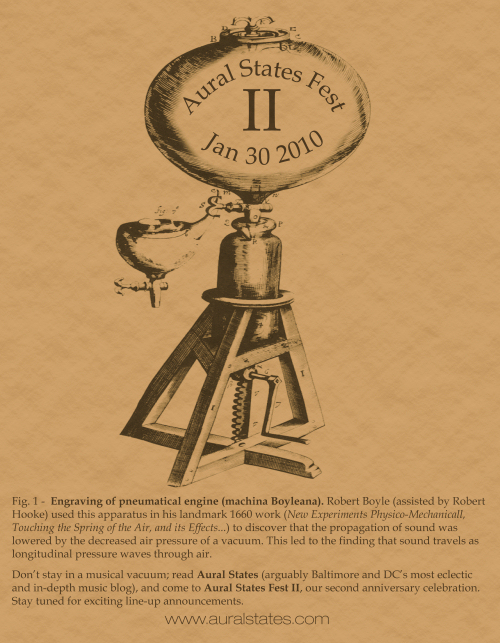
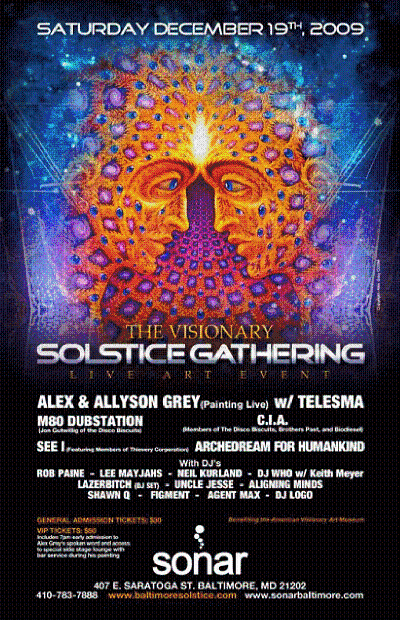













 Double Dagger: Masks EP
Double Dagger: Masks EP Pfisters: Narcicity
Pfisters: Narcicity Lizz King: All Songs Go To Heaven
Lizz King: All Songs Go To Heaven Imperial China: Phosphenes
Imperial China: Phosphenes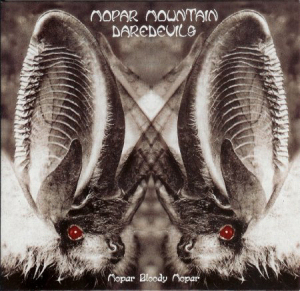 Mopar Mountain Daredevils: Mopar Bloody Mopar
Mopar Mountain Daredevils: Mopar Bloody Mopar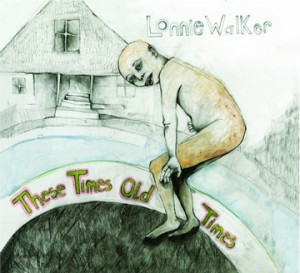 Lonnie Walker: These Times, Old Times
Lonnie Walker: These Times, Old Times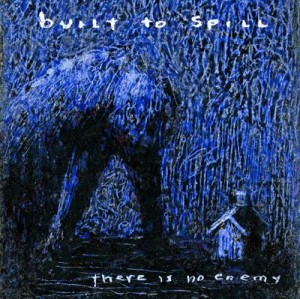 Built to Spill: There Is No Enemy
Built to Spill: There Is No Enemy Hypnotic Brass Ensemble: Hypnotic Brass Ensemble
Hypnotic Brass Ensemble: Hypnotic Brass Ensemble Secret Mountains: Kaddish EP
Secret Mountains: Kaddish EP Bela Fleck: Throw Down Your Heart: Tales From the Acoustic Planet, Vol. 3 -Africa Sessions
Bela Fleck: Throw Down Your Heart: Tales From the Acoustic Planet, Vol. 3 -Africa Sessions Lands & Peoples: Lands & Peoples EP
Lands & Peoples: Lands & Peoples EP Caleb Stine: Eyes So Strong and Clean
Caleb Stine: Eyes So Strong and Clean Wye Oak: The Knot
Wye Oak: The Knot Pontiak: Maker
Pontiak: Maker White Rabbits: It's Frightening
White Rabbits: It's Frightening Dirty Projectors: Bitte Orca
Dirty Projectors: Bitte Orca Double Dagger: More
Double Dagger: More Elvis Perkins in Dearland: Elvis Perkins in Dearland
Elvis Perkins in Dearland: Elvis Perkins in Dearland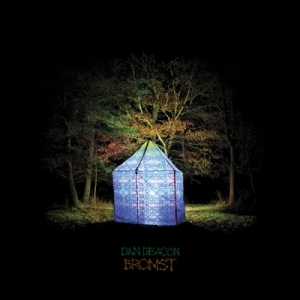 Dan Deacon: Bromst
Dan Deacon: Bromst The Thermals: Now We Can See
The Thermals: Now We Can See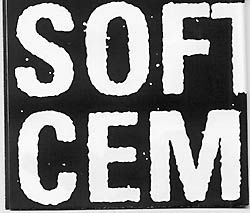 Soft Cement: Think About It EP
Soft Cement: Think About It EP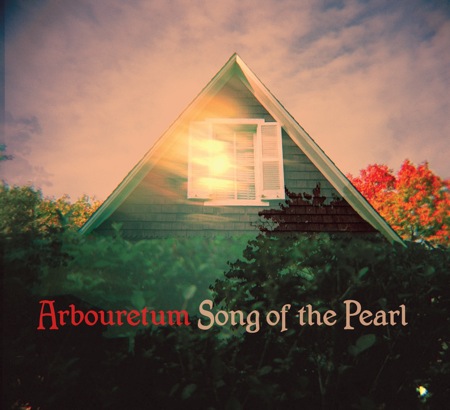 Arbouretum: Song of the Pearl
Arbouretum: Song of the Pearl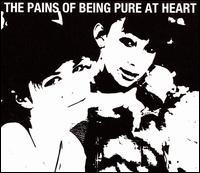 The Pains of Being Pure at Heart: The Pains of Being Pure at Heart
The Pains of Being Pure at Heart: The Pains of Being Pure at Heart Benjy Ferree: Come Back to the Five and Dime, Bobby Dee Bobby Dee
Benjy Ferree: Come Back to the Five and Dime, Bobby Dee Bobby Dee Weekends: Weekends
Weekends: Weekends Height With Friends: Baltimore Highlands 12" LP, Limited-Run Vinyl Only
Height With Friends: Baltimore Highlands 12" LP, Limited-Run Vinyl Only Caverns: Kittens! EP
Caverns: Kittens! EP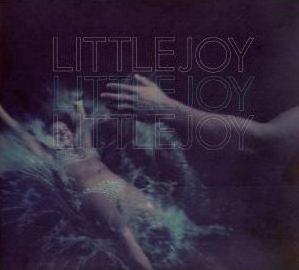 Little Joy: Little Joy
Little Joy: Little Joy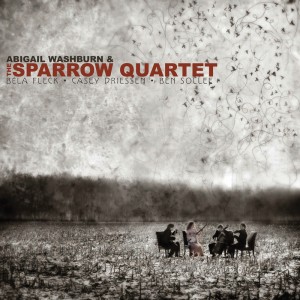 Abigail Washburn & the Sparrow Quartet:Abigail Washburn & the Sparrow Quartet
Abigail Washburn & the Sparrow Quartet:Abigail Washburn & the Sparrow Quartet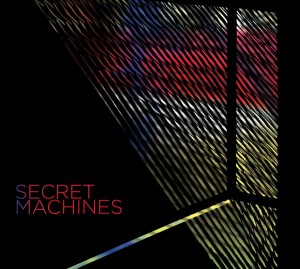 The Secret Machines: Secret Machines
The Secret Machines: Secret Machines The Bug: LondonZoo
The Bug: LondonZoo 13th Floor Elevators: Psychedelic Sounds of the 13th Floor Elevators (Vinyl Mono LP only)
13th Floor Elevators: Psychedelic Sounds of the 13th Floor Elevators (Vinyl Mono LP only) Arbouretum/Pontiak: Kale (Vinyl LP only)
Arbouretum/Pontiak: Kale (Vinyl LP only) Small Sur: We Live in Houses Made of Wood
Small Sur: We Live in Houses Made of Wood AbeVigoda: Skeleton
AbeVigoda: Skeleton ImperialChina: Methods: EP
ImperialChina: Methods: EP
classic weaver